Key points of planting Dragon Fruit in North greenhouse
The dragon fruit is originally a tropical and subtropical fruit, which likes light and shade, heat and drought, fertilizer and barren. It grows rapidly in a warm, humid and sufficient light environment, and the optimum temperature is 25-35 ℃. The soil quality is better in neutral soil or weak acid soil with high humus content and good ability of water and fertilizer conservation.
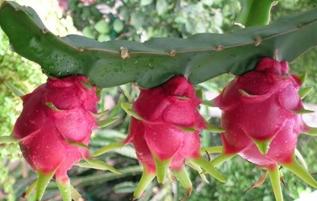
As a plant originally growing in the tropics and subtropics, it is necessary to build greenhouse, cement column, soil management, seedling management, water and fertilizer management, agronomic management and so on in order to plant in North China with cold winter temperature.
I. Construction of greenhouse
According to the needs of planting scale, small-scale planting generally adopts independent greenhouse with convenient construction and low cost, and large-scale planting adopts conjoined greenhouse with convenient management. The plant height of dragon fruit is generally 1.5-1.8m, so in order to manage in the future and ensure sufficient growth space, the height of the greenhouse can be 2.5-3m. Vents and ventilation devices need to be installed on and around the roof to facilitate the adjustment of temperature and humidity in summer, and the film with good light transmission performance should be selected for the roof cover, and the cleaning and replacement work should be done well to prevent the decrease of thermal insulation performance caused by the decrease of light transmittance and damage of the film.
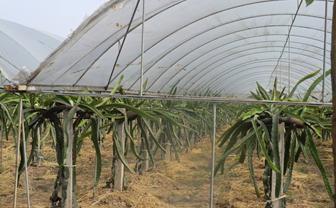
II. Cement column insertion and construction
At first, the ridge was planted with a height of 30-1000px and a width of 1.5-2m, and then cement columns were built at an interval of 1.8m-2m, and the cement columns were connected to the top with wire to bind the branches and fruiting branches in the later stage of dragon fruit.
III. Soil management
Pitaya is most suitable in neutral or weakly acidic soils with high humus content and strong water and fertilizer conservation capacity, so when choosing planting sites, try to choose such soils, or apply organic treasure (organic matter ≥ 70%) to the soil, no-tillage to regulate soil organic matter content and soil structure to the suitable range.
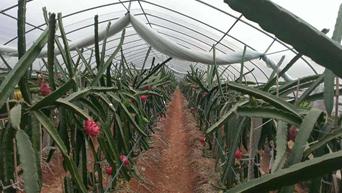
IV. Seed and seedling management
Pitaya is generally propagated by cutting, the cutting time is generally spring, choose a strong stem node and cut into 15-500px segments, wait for the wound to be air-dried and then directly cut to the cement column, the cutting depth is about 125px, one section on each side of the cement column, and fixed with a rope, watering after about 10 days.
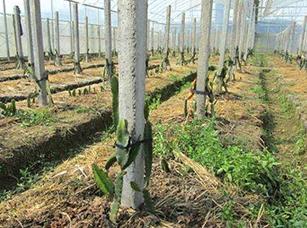
V. Water and fertilizer management
The dragon fruit is drought-tolerant but not waterlogged, and the soil water content is 70-80%, which can meet the needs of growth, and if the soil water content is too high, it will lead to root rot, so it is necessary to replenish the soil water properly according to the amount of soil water content. take the wetness of the border as the standard, and remember to replenish frequently and a large amount of water. At the same time, the demand for fertilizer in the growth and development stage of dragon fruit is relatively large, at this time, ≥ 500g/L (170,170170-170) can be applied with water; generally, cutting in the spring of the same year will bear fruit in the coming year, but in the fruit expansion period, Jie Neng potassium nitrogen phosphorus potassium 850g/L (K2O ≥ 450g/L) can be applied with water to meet the large demand for potassium.
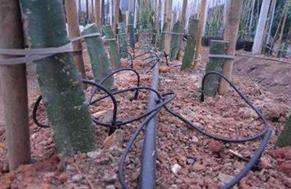
VI. Agronomic management
Temperature control, when the temperature in the shed is above 35 ℃ in summer, it is necessary to open the sunshade net or open the vent to shade or cool down.
Coring, when the cuttage grows to 1.3-1.4 m high, it is necessary to pick the heart, promote branches, and let the branches droop naturally.
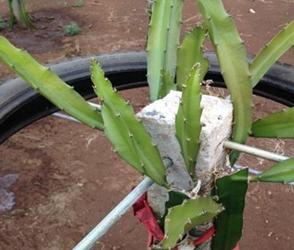
Artificial pollination, few pollination insects in the greenhouse, the need to manually collect pollen for artificial pollination, generally interplant some other varieties of dragon fruit, can improve the success rate of pollination
Postharvest management, cutting off the fruiting branches after fruit harvest every year to facilitate the generation of new branches.
- Prev
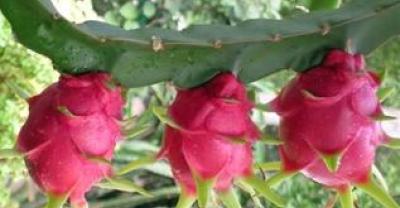
Rose planting method, flower language and packaging
Rose planting methods, flower language and packaging roses, as a highly ornamental and practical plant, are often used as gifts to express feelings for others.
- Next
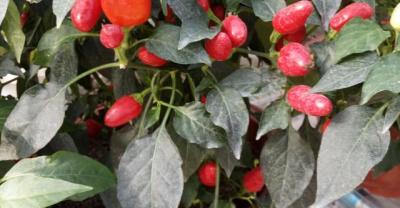
Analysis of five types of planted crops in 2018
The first category: sugar crops focus on stabilizing advantageous producing areas such as Guangxi and Yunnan, and appropriately reducing sugarcane producing areas that do not have comparative advantages. By 2020, sugar noodles.
Related
- Fuxing push coffee new agricultural production and marketing class: lack of small-scale processing plants
- Jujube rice field leisure farm deep ploughing Yilan for five years to create a space for organic food and play
- Nongyu Farm-A trial of organic papaya for brave women with advanced technology
- Four points for attention in the prevention and control of diseases and insect pests of edible fungi
- How to add nutrient solution to Edible Fungi
- Is there any good way to control edible fungus mites?
- Open Inoculation Technology of Edible Fungi
- Is there any clever way to use fertilizer for edible fungus in winter?
- What agents are used to kill the pathogens of edible fungi in the mushroom shed?
- Rapid drying of Edible Fungi

